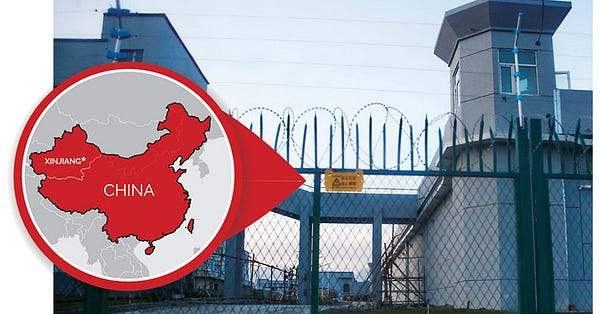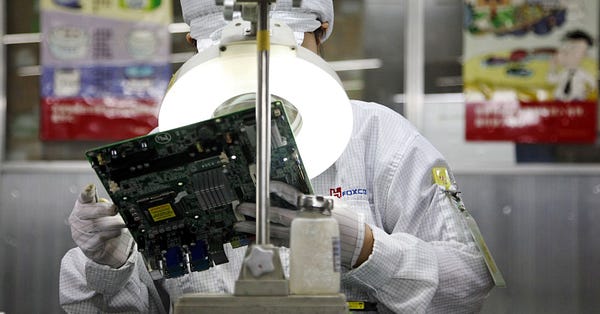Fed, you're so vain; you probably think this economy is about you
Tomorrow we get another CPI. If it's good, as many expect, it would be the third month of core close to the pre-Covid pace. But the Fed is so busy looking in the mirror; it might not even notice.
Update: CPI decreased by 0.1 percent in December. CPI excluding food and energy increased by 0.3 percent. Both were close to consensus, and year-over-year inflation continues to step down. GOOD NEWS!!!!!!!
The Fed is the only institution with a mandate to keep inflation low, though low unemployment is equal under the law. Less than two years of high inflation, and even with it cooling, the Fed is obsessed with its ‘Inflation Fighter’ cred. And the Fed is overselling its importance to justify aggressive rate hikes. That’s dangerous.
Once again, Fed Chair Jay Powell told us that low inflation is the end all be all:
Price stability is the bedrock of a healthy economy and provides the public with immeasurable benefits over time. But restoring price stability when inflation is high can require measures that are not popular in the short term as we raise interest rates to slow the economy.
Is low inflation “the bedrock” of the economy? You have to be kidding me. Find me anyone who has not drunk the ‘monetary policy Kool-Aid’ or does not have millions of dollars in savings that would call low inflation alone the bedrock. How about workers, small businesses, or entrepreneurs as our bedrock? They each do far more for the economy than low inflation or the Fed. They are the economy.
What has been the cost of low inflation?
So let’s unpack the Fed’s “bedrock” and measure inflation’s “benefits.” Since the early 1990s and until Covid, overall inflation was around 2 to 3%. Part of low inflation was due to outright declines in the price of durable goods, that is, negative inflation.
Even with the sharp increase during the pandemic and war in Ukraine, prices for consumer durables are almost 30% lower than in 1990. And are at the level in 2013. These prices have fallen since September 2022 and show no sign of stopping. Moreover, after the disruptions in the past three years unwind, the downward trend in prices should continue. Even with the talk of onshoring, much of our production will remain overseas. Cheap labor and just-in-time supply chains are profitable.
Powell claims that low inflation is necessary for a “healthy” and its benefits are “immeasurable.” But our economy was not healthy for many; low inflation has costs.
1) Human rights violations and poor working conditions overseas.
The rise of China as an economic superpower was important for low inflation, especially for goods. Moving production to China from the United States was dramatically more profitable. Shareholders won big, as did U.S. consumers to a lesser extent. Chinese workers in forced labor and unsafe working conditions paid dearly.
The human rights of Uyghurs were traded for higher profits and lower inflation.
The People's Republic of China has arbitrarily detained more than one million Uyghurs and other mostly Muslim minorities in China's far western Xinjiang Uyghur Autonomous Region. It is estimated that 100,000 Uyghurs and other ethnic minority ex-detainees in China may be working in conditions of forced labor following detention in re-education camps.


Less horrific though also disturbing, is the abuse of workers at Foxconn, one of Apple's largest producers of iPhones.
A report released Sunday by China Labor Watch, a nonprofit advocacy group, accused Apple and its manufacturing partner Foxconn of a litany of labor violations, including withholding bonus payments, rolling back safety training and employing more temporary workers than China’s laws allow


2) American workers without living wages.
Walmart is the largest employer in the United States, with 2.3 million workers. Hourly pay is 13 dollars, less than half of the average hourly earnings for production and non-supervisory workers. Yet, even with those low wages, Jason Furman argued that “Walmart: A Progressives Success Story” is worth it.
There is little dispute that Wal-Mart’s price reductions have benefited the 120 million American workers employed outside of the retail sector. Plausible estimates of the magnitude of the savings from Wal-Mart are enormous – a total of $263 billion in 2004, or $2,329 per household. Even if you grant that Wal-Mart hurts workers in the retail sector – and the evidence for this is far from clear – the magnitude of any potential harm is small in comparison. One study, for example, found that the “Wal-Mart effect” lowered retail wages by $4.7 billion in 2000.”
As with the Uyghurs and Foxcomm workers, we can argue how to compare the costs of Walmart workers to the benefits of consumers. That’s a tough question, albeit a tougher one than Furman suggests. But his “solution” is undeniably problematic:
But Wal-Mart, like other retailers and employers of less-skilled workers, does not pay enough for a family to live the dignified life Americans have come to expect and demand. That is where a second progressive success story comes in: the transformation of our social safety net from a support for the indigent to a system to that makes work pay. In the 1990s, President Clinton fought for expansions in support for low-income workers, including a more generous Earned Income Tax Credit (EITC) and efforts to ensure that children did not lose their Medicaid if their parents took a low-paid job. The bulk of the benefits of these expansions go to the workers that receive them, not to the corporations that employ them.
That’s not a success story. The founding principle of a social safety net is to help people during a crisis, like a temporary job loss. The fact that the largest employer in the United States does not pay a living wage persistently and thereby forces their workers to apply for benefits is a problem and a clear sign of an “unhealthy” economy.
American workers getting less isn’t limited to Walmart. The national labor share has fallen notably since 2000 and is well below the 1980s.
So, when you hear the Fed and elite macroeconomists hyperventilating about ‘too high’ growth in Average Hourly Earnings, remember that slow wage growth has been a long-running cost for American workers. Inflation is not the bedrock of a “healthy” economy; the Fed’s sole pursuit threatens our true bedrock, our workers.
3) Poor working conditions in the United States too.
Amazon is the second largest employer in the United States, with 1.6 million workers. Its business model is to have workers last about a year, reflected in the physical, highly-monitored, fast-paced work designed for efficiency, not humanity.
During the pandemic, as businesses were told to close, online giants—like Amazon—greatly benefited. To gain a sense of the enormity of consumer demand, Amazon hired over 300,000 people to keep up with orders. A New York Times investigative piece shed some harsh light on the lives of warehouse workers.

Jeff Bezos, the owner of Amazon, is worth $110 billion. Yes, billion. His life and working conditions are unimaginably good. He went into outer space, not a workplace, without regard for his safety and dignity.
In closing.
The Fed’s claims that low inflation is the “bedrock” of our economy and is the only path to a “healthy” economy that benefits workers over the long term are out of touch with reality and offensive. The benefits of low inflation exist for consumers, but they come at a cost to workers. Most Americans are consumers and workers; low wage growth offsets benefits from low inflation. For shareholders and the C-suite low inflation world is a win-win. But the 1%, as with the Fed, is not the economy.
The Fed’s vain obsession with low inflation puts the economy at risk. Fed officials decide the policy but don’t let them hide behind false claims.






That most Americans are consumers AND workers as you point out - and in particular, most are workers in non-white collar non-office settings, i.e. production & nonsupervisory - is such an important concept to keep in mind! I think many economists and policymakers struggle to grasp this both for theoretical reasons and also practical ones. I’d be curious if there’s anything written about it. It does seem to be central to the success of neoliberal anti-worker politics.
Claudia i miss you from Twitter but I completely understand your reasons for quitting. This is yet another exceptional article from you highlighting the trade offs that have been made.